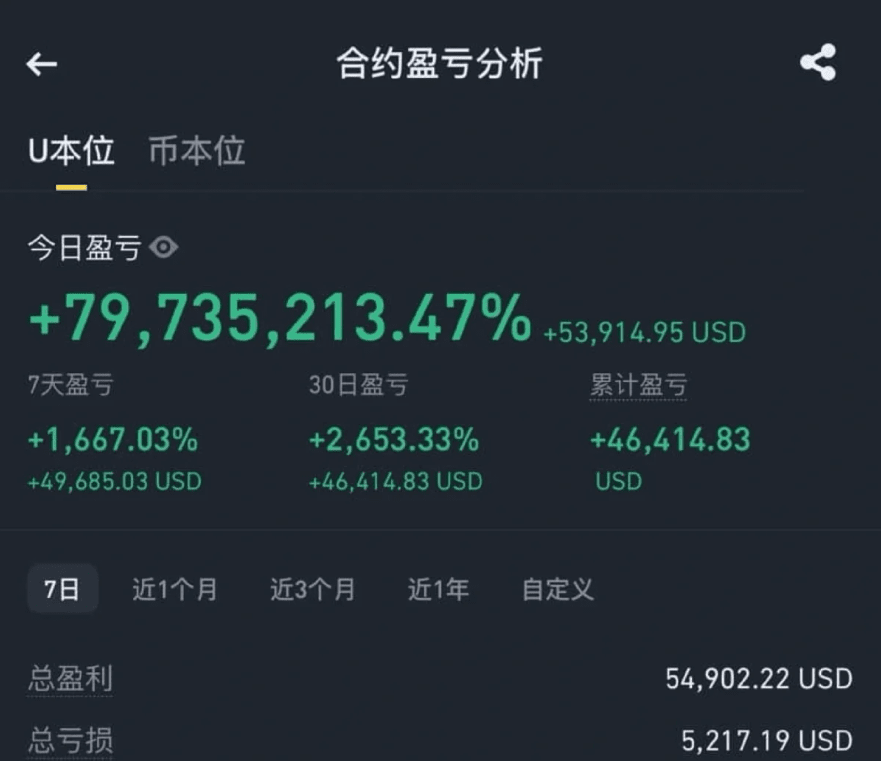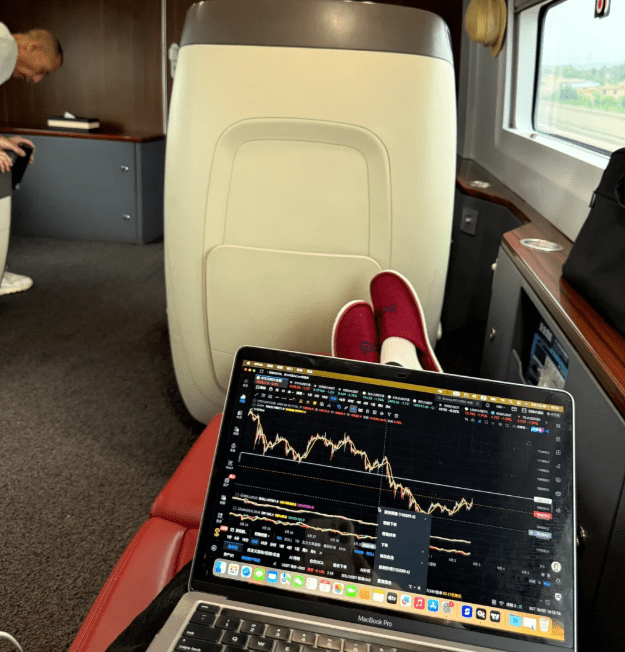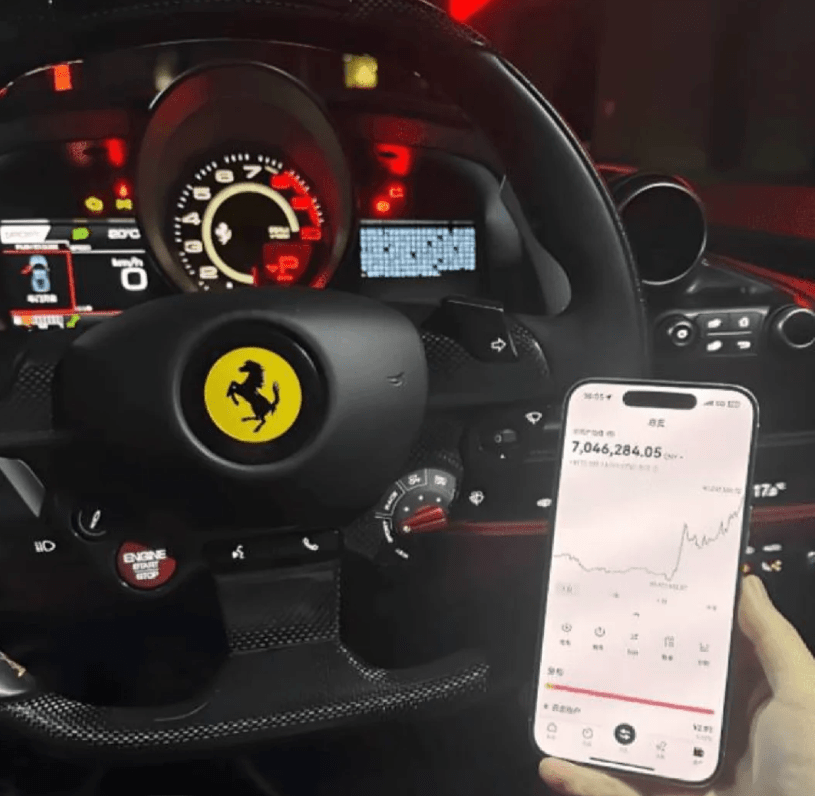There are many methods to trade cryptocurrencies, but not all methods can be learned. We all hope to achieve good results with the simplest methods. However, friends in the crypto space do not lack good coins; rather, they overthink!
Trading is fundamentally about doing four things: selecting targets, buying points, selling points, and managing positions. Traders need to have an independent trading system to execute these four actions. In trading practice, the abc trading strategy has a stable win rate and is simple to understand.

(1) Source and basic connotation of the strategy
The abc trading strategy is derived from the core trading theory abcd developed by my mentor. The mentor's methods apply seamlessly in the A-share market, and I have expanded this theory in light of the characteristics of crypto trading. The abcd core trading theory incorporates the essence of Dow Theory, Wave Theory, Turtle Trading Rules, D'Avas Box Theory, Trading Psychology, and other theories.
Figure 1 represents a classic upward trend. The underlying logic is that the bottom is rising, and the upward trend continues.
Figure 2 represents a classic downward trend. The underlying logic is that the top is lowering, and the downward trend continues.
Any trading target's K line movements are a continuous repetition and superposition of these two classic patterns. A deep understanding of these two classic patterns is fundamental to mastering the abc trading strategy.
(2) Buying and selling points
The abc strategy primarily focuses on right-side trading, pursuing a high win rate without seeking extreme profits. It advocates building positions in batches, taking profits in batches, and cutting losses in batches to minimize risk.
Taking Figure 1 as an example, the buying points appear at X and Y. The buying characteristic at point X is 'four entries' (the closing price exceeds the highest price of the previous 4 candlesticks), and the buying characteristic at point Y is that the closing price exceeds point B. There are two stop-loss points: the first is 'two exits' (the closing price of the current candlestick is lower than the lowest price of the previous two candlesticks), and the second is point C, with all losses cut at this point. The abc strategy allows for some left-side trading with a focus on controlling position and stop-loss.
Applying in practice to Figure 3, it has formed an upward abc structure; arrow 1 is the 'four entries' buying point (figure
The buying points X and Y described above coincide in practical Figure 3. The two stop-loss points are the 'two exits' that may occur after arrow 1 and point C.
Note: 'Four entries and two exits' also comes from the teaching.
Compared to stop-loss points, the profit-taking point model is relatively complex, with multiple selection dimensions and requiring several rounds of profit-taking.

The three basic profit-taking methods are:
'Two exits' profit-taking. In Figure 3, arrow 2, the closing price is below the lowest price of the previous two candlesticks, indicating profit-taking.
Excess profit profit-taking. Any time dimension k line shows a short-term rapid increase in volume, indicating profit-taking; this belongs to left-side profit-taking.
Multi-point overlapping profit-taking.
Draw a horizontal line at the closing price of point D, and if multiple points on the right are near the same horizontal line, one can choose to take profits near that horizontal line. Additionally, there are low-volume profit-taking, critical point profit-taking, box doubling profit-taking, etc.
(3) Position
The size of the position determines the profit margin, with many factors and varying weights.
The main principle is:
When the overall trend is upward, one can open a larger long position, while short positions should be small. The opposite is also true.
The more significant the volume shows bullish strength, the higher the position ratio should be; if the volume is flat, one needs to control the position. The opposite is also true.
Left-side opening positions generally do not exceed 1/4.
The above are the key points of the basic version of the abc strategy. Based on this, combined with complex candlestick patterns, aiming for a higher win rate, it is also necessary to use tools such as Fibonacci retracements, multi-point connections, upward/downward channel lines, triangles, etc., in conjunction with the abc strategy application. The above content will be shared in the advanced version of the abc strategy, along with detailed explanations of left-side opening positions, more profit-taking methods, 'four not to enter,' 'two not to exit,' and other advanced plays.

Three maxims of volume-price relationship: Volume increases, price rises to enter; volume is flat, price drops to exit!
High volume at high points is the best strategy.
High points usually refer to prices that are near historical highs or where there are 3-4 large cycles at running high levels. If volume appears at this time, it indicates that the main force is selling, distributing chips to retail investors. The best strategy here is to exit and observe; if this position does not show relatively large volume, do not exit easily.
Low volume at low levels is the best strategy.
Low volume at low levels may be because the main force is still distributing and has not reached the accumulation step. As long as there is no accumulation, the real lifting opportunity has not yet arrived; only when there is increased volume can one determine that the main force is taking action. Therefore, one should dare to follow up when volume appears at the bottom; even if wrong, it is a risk worth taking. Waiting might take longer, but it should not result in a loss.
Entering when volume increases and price rises is not to be feared.
As trading volume increases, prices continue to rise, indicating that the market has momentum. According to trend principles, there will be subsequent actions, not just a single wave, so one must dare to enter the market; however, similarly, when volume rises but price remains flat or volume increases but price rises, caution is advised.
Regarding the market:
If the market volume continues to strengthen, there will be more opportunities for various coins, and the overall operational guideline is to exert all efforts to push upwards; conversely, if the volume is not very evident, it is still advisable to operate with light positions; if the energy weakens, opportunities for individual stocks will be rare, and it is wise to step back and not act rashly.

Regarding individual coins:
Increased trading volume indicates that the overall market is still building up for a big rise; decreased trading volume indicates reduced energy, and one should not focus too much on low-volume individual coins.
Pay attention to the position; both high and low volume can potentially cause trend reversals, so do not neglect this.
When the trading volume is high and the coin price has dropped significantly, the trend continues to decline. If a decrease in volume occurs later, it indicates that the downward trend is about to end. When the price has dropped less, that is the day of reversal.
How to maintain a 90% win rate in the crypto space?
In this enticing and risky world of cryptocurrencies, many investors aspire to maintain an exceptionally high win rate.
However, achieving a 90% win rate is not easy; it requires deep market understanding, rigorous investment strategies, and strong risk control capabilities.
The most challenging aspect of trading cryptocurrencies is not selecting coins or buying and selling, but waiting; the most challenging aspect of life is not hard work or struggle, but making choices. A downturn cleanses impatience, while an upturn tests discipline. Trading cryptocurrencies can help us grow continuously, and growth is painful; this pain does not stem from growth itself, but from facing so many changes and deep memories during the growth process.
Those with self-discipline in the crypto space find joy even in pain; where there is hope, hell can also be heaven.
In the crypto space, retail investors always abandon what hasn't risen and chase after what has risen; in life, people always cherish what they haven't obtained and forget what they already have. The reason for losing money in crypto trading is not because the thinking is simple, but because the requirements are complex; the reason people are happy is not because they have gained more, but because they have cared less.
#中国加密新规 #BitDigital转型 #币安HODLer空投PLUME
Continuously monitor: bnb eth tree link



